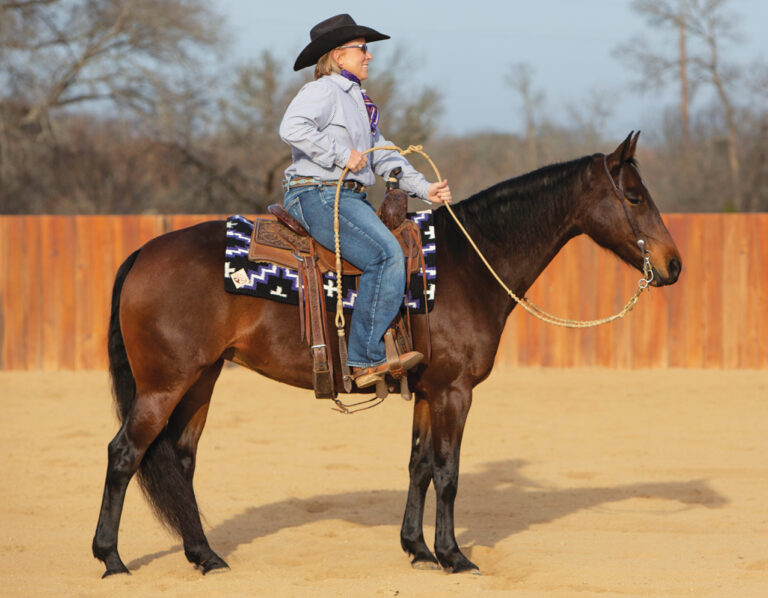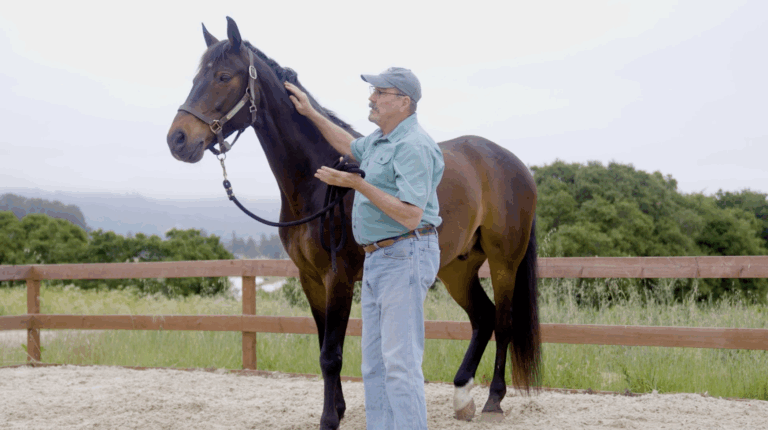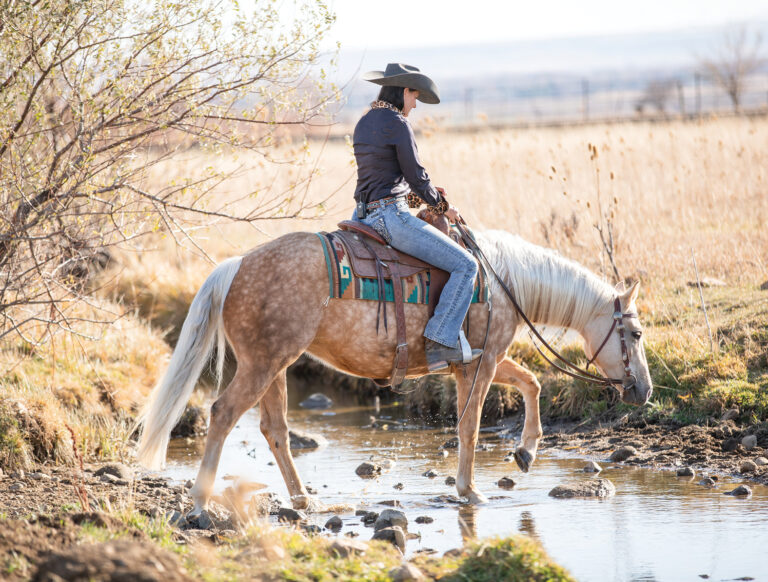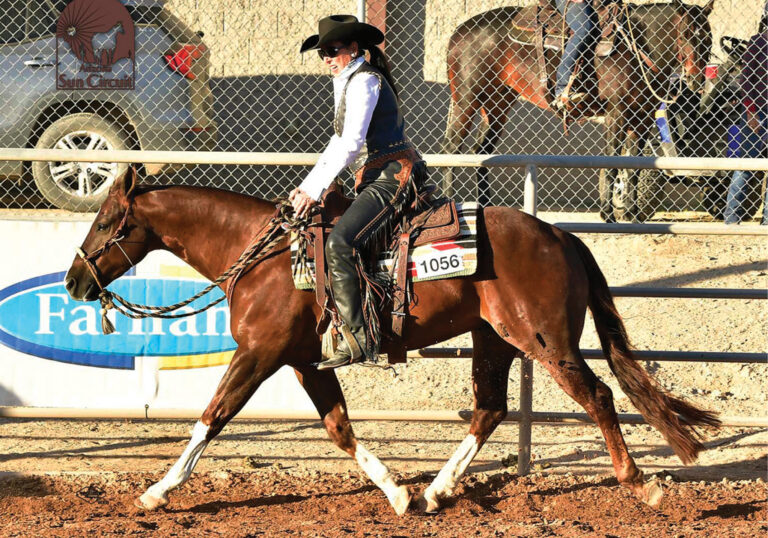Western Horsemanship pattern:
- Enter arena. Pick up left lead at “line” and lope to Marker A.
- Stop at Marker A and pivot on hindquarters 360? right.
- Pick up right lead and lope to Marker B.
- Stop at Marker B and pivot on hindquarters 360? left.
- Pick up left lead and lope to Marker C.
- Stop at Marker C and back approximately 5 steps.
- Drop stirrups, jog a half circle to point D, continue at a jog and serpentine through cones to point E, starting with the first cone on your right.
- At point E, pick up stirrups and pick up right lead.
- Break down to walk at “line” and exit arena.Western Horsemanship Challenge: To score well in a demanding pattern from the Arabian Youth Nationals. Western Horsemanship Strategy: This pattern tests your skills, knowledge of your horse, and ability to make judgments. It’s designed to flow around a centerpiece, a feature at many big Arabian shows. Here are some tips:
The instructions say to pick up the left lead at the “line,” but not how to get there. Use your judgment to set up your horse for a crisp, sharp lope departure: If he needs to walk to settle when he enters the arena, do it. If he needs momentum, jog.You’ll stop three times on the arena’s long side; all three stops should be neat, workmanlike, and balanced. The judge won’t be looking for a hard slide, but you’ll lose points if your horse ambles into the stop or falls onto his forehand. Know how quickly your horse will respond to your whoa, so you can halt him with the markers positioned between his head and chest.
Make sure your right pivot is a quiet and efficient walkaround – prompt, but not a spin. Stop just a few degrees short of the full 360, so your horse will be set up properly for the right-lead lope. This is especially important if he has trouble with that lead.
If your horse can strike off immediately from the turn, do it. If he needs a second to settle, give it to him. Don’t override by asking for too much, too soon, and risk getting the wrong lead. Make your second stop and left pivot the same way, again ending the turn just a few degrees shy of 360 so you’ll be positioned for the left lead.
When you stop for the third time, let your horse settle for just a second or so, but not so long that he gets flat. He’ll back most readily if he’s still a little rounded, with energy in his body.
Carefully plan your half circle, so you’ll start the serpentine with the first cone on your right. The more you practice jogging without stirrups, the better you’ll appear. Practice riding a serpentine, too, to perfect even loops all the way through.
Pick up your stirrups at the end of the serpentine and strike right off on the right lead. At the line, smoothly and efficiently break to the walk, and exit.A final note: If any posted instruction is ambiguous, you’re entitled to ask for a clarification before the class begins.This article first appeared in the October 1997 issue of Horse & Rider magazine.




